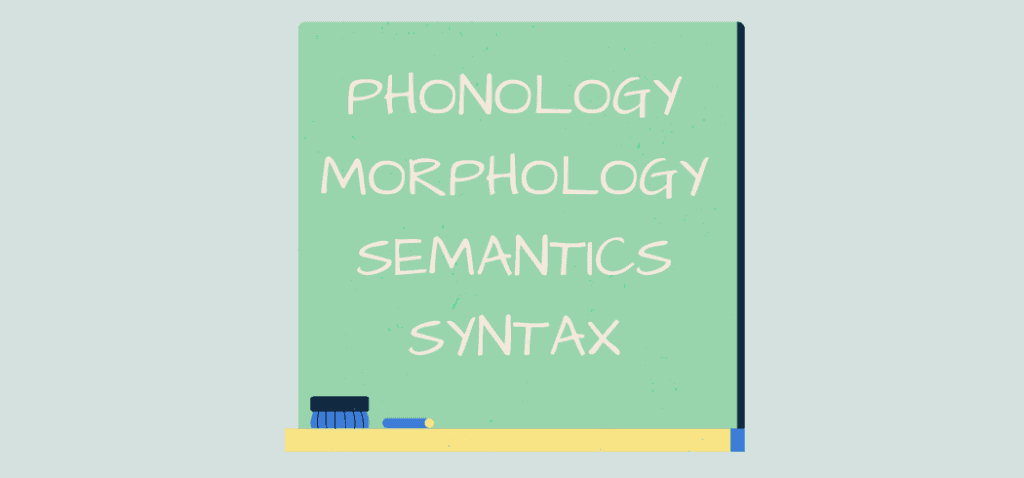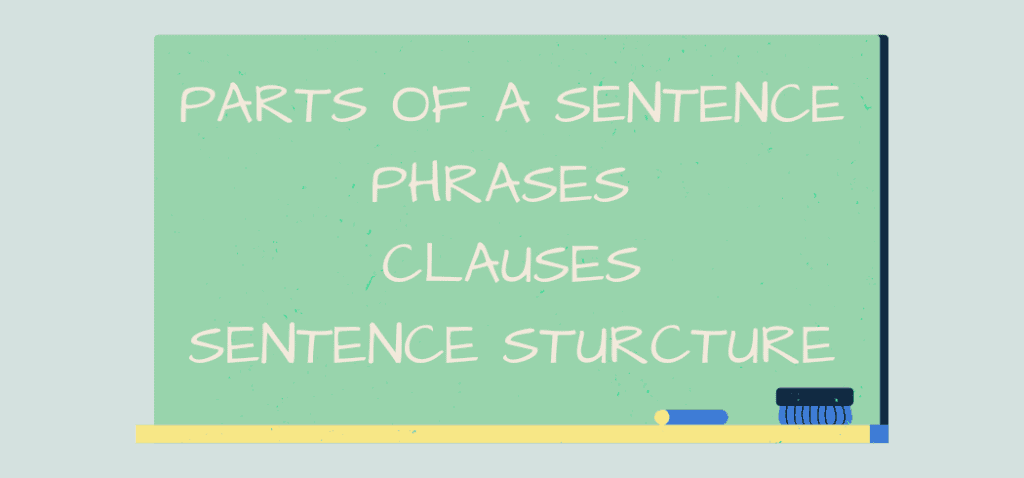Grammar and syntax are overlapping fields under linguistics that discuss the construction of words, phrases, and sentences. But many people think they are one and the same.
Are grammar and syntax the same concepts in language? This guide will show the differences between the two language terms and their elements. Find out how to analyze a sentence in terms of syntax and grammar.
Elements of Grammar

The rules of grammar is a systematic study and analysis of a language, such as English. It discusses the system built around a language, including its structural rules, sentence formation, and more as it applies to the construction of sentences. These rules can be categorized into phonology, morphology, semantics, and syntax.
The rules under grammar create a convention on its use to help speakers and writers arrange words systematically. Here are its elements.
Morphology
Morphology studies a word’s internal structure or the minor language units. It discusses simple words and complex words.
Simple words only have one morpheme, meaning you can’t split them into tinier parts. Some examples include build, run, and, work.
Complex words have more than one morphemes, which means they possess an internal structure. Some examples include words with suffixes and prefixes.
Morphology also talks about free and bound morphemes.
Phonology
This is the study of the speech sound patterns in a language. Phonologists examine these sounds’ categories and how they relate to a word’s meaning.
Do not confuse phonology with phonetics. Phonology studies abstract concepts, while phonetics is concerned with the sounds’ physical characteristics.
One example of a lesson under phonology is how atom and atomic differ in meaning and form. It also discusses what speech sounds go together and how they are organized into syllables.
Semantics
Semantics is a branch of linguistics associated with logic and meaning, which you can apply semantics to a single word or an entire text. This study deals with words’ conventional meanings that the speaker or writer conveys.
Syntax
Syntax is concerned with the word and phrase arrangement to form sentences in a language. The rules of syntax discuss the parts of a sentence, clauses, structures, and phrases.
Elements of Syntax

Syntax discusses the system of arranging words to form a sentence. It’s a Greek word that means “arrange together.”
Think of it as part of a hierarchy of forming language dictated by grammar. The most basic level deals with the formation of language sounds. There’s also a system for structuring words. Meanwhile, syntax deals with phrases, clauses, and more.
Here are the elements of syntax.
Parts of a Sentence
Syntax discusses the parts of a sentence, including the subject, predicate, and object. You’ll learn that verbs may be transitive or intransitive depending on the presence of a direct object.
The parts of a sentence also imply the existence of the nominative and objective cases of nouns and pronouns.
Phrases
This is a group of words that do not have a subject or predicate. Phrases can be coordinated with a phrase of the same kind. You can also delete a phrase from a sentence without affecting the structure.
A phrase can be a noun phrase, verb phrase, adjective phrase, adverbial phrase, or a prepositional phrase.
Clauses
They’re also a group of words with a subject and a verb. They can convey a clear message based on their structure, but they are not considered complete sentences.
Clauses can be independent or dependent. Independent clauses stand on their own as complete sentences. Dependent or subordinate clauses start with subordinating conjunctions and can’t stand on their own as complete sentences.
Sentence Structure
The structure of even a simple sentence is determined in terms of the number of dependent and independent clauses. The structure types include simple, compound, complex, and compound-complex. How you use these syntactic rules will determine meaningful sentences in any natural language.
The Difference Between Grammar and Syntax Made Easy
The rules of syntax is the system that determines how one can combine words to make a sentence. The classifications of grammar are only a branch of linguistics that studies syntax and morphology.
Basically, syntax is a part of grammar and the study of sentences, while grammar is a discipline or an area of study when it comes to verb agreements and the building of punctuation. Syntax also dictates the rules for arranging words based on the types of sentences. These include declarative, interrogative, and more.
Grammar simply studies how to create a meaningful and logical sentence. Checking for grammar means looking for misplaced modifiers, upholding the stand of usage with nouns and verbs, proper punctuation, and more. It’s also responsible for explaining how we work with language and use words. We understand the correct way to use English in writing and speaking through grammar.
Here’s a comparison chart to help you remember the difference between the broad term of grammar and the Greek word syntax.
What is it?
Syntax:
A component of grammar.
Grammar:
A field of study under linguistics.
What does it determine?
Syntax:
How words are formed and structured into a sentence.
Grammar:
How language works, including how logical sentences are formed.
What does it mean?
Syntax:
Syntax is the system that determines how one combines words to form sentences.
Grammar:
Grammar is a branch of linguistics that studies syntax and morphology.
What does it dictate?
Syntax:
Rules on word arrangement.
Grammar:
Language laws.
Examples of Grammar and Syntax
Understanding grammar means accepting that there are thousands of grammar rules, and you may never fully comprehend all of them.
Any sentence you read, write, and say can be analyzed through the conventions of correct grammar and syntax. Whether it’s formal or informal, it will always follow a pattern to form a pattern that your recipient will convey. Here are some examples to show the difference between syntax and grammatical rules.
- I didn’t attend classes.
Regarding grammar, “I” is a first-person singular pronoun that agrees with the past-tense verb phrase “did attend.”
The syntax elements of the sentence are the subject, “I” and the predicate, “didn’t attend classes.” It’s composed of one independent clause and includes a direct object, “classes.”
- After eating lunch, Mary and her family went to the mall.
The grammar elements in the sentence include the subordinating conjunction “after,” which describes “eating,” and “lunch,” which is a noun. The coordinating conjunction “and” connects “Mary” and “her family,” which is composed of a possessive pronoun and another noun.
The past tense verb “went” is followed by the preposition “to,” article “the,” and noun “mall.”
Is Punctuation a Grammar or a Syntax?
Punctuation is neither grammar nor syntax, but parts of them. The rules on punctuation are dictated by writing conventions, not grammar or syntax. The same is true with spelling rules and capitalization.
A good writer should know proper grammar and writing conventions to create clear and error-free writing. Complex sentences in the English language should also be correct sentences, and you cannot do this without proper punctuation.
Some online spell and grammar checkers combine grammar and writing conventions when suggesting corrections to writers.
Is Grammar a Syntax or Diction?
English grammar concepts are neither syntax nor diction. It is simply the system of a language, which can encompass both diction and syntax.
In phonology, diction is the manner of speaking against the rules of elocution and pronunciation. Syntax rules discuss how we form words into sentences.
What is the Difference Between Grammar and Structure?
Structure is a discussion under proper and improper grammar or the system of language that discusses the word order in sentences. The most common structure is Subject-Verb-Object or SVO.
Studying the structure of sentences is essential in determining the meaning of these messages. Here are two similar sentences with different structures and meanings:
- The mother agreed to the request given by the daughter.
- The mother gave the request agreed to by the daughter.
The only is the position of “agreed” and “gave/given,” but their meaning significantly changed.
James R. Hurford stated, “The grammatical structure of a sentence is a route followed with a purpose, a phonetic goal for a speaker, and a semantic goal for a hearer.”
Proper Grammar and Syntax Will Help You Become a Better English Speaker and Writer
Grammar and syntax are two different concepts under linguistics and grammar rules. Syntax dictates rules on word arrangement, while grammar indicates overall language laws. Grammar is also the entire system of language rules that includes syntax.
Master the elements of grammar and syntax now so you can become a better English writer and speaker.
